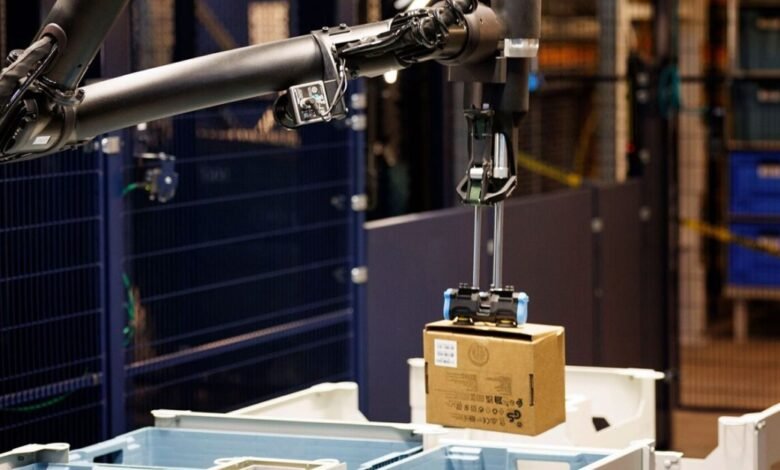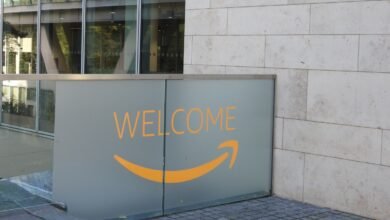Amazon Unveils New Robots, Says They’re for Cost-Cutting, Not Job Loss

▼ Summary
– Amazon introduced Blue Jay, a robot designed to assist employees with lifting tasks, and Project Eluna, an AI system that reduces cognitive load by optimizing sorting.
– Blue Jay can handle 75% of Amazon’s stored items and is intended to be a core technology for Same-Day delivery sites, developed using AI and digital twins in just over a year.
– Amazon Robotics emphasizes that their focus is on people and building the future of work, citing job creation and plans to hire 250,000 seasonal workers.
– CEO Andy Jassy stated that generative AI will lead to fewer people in some roles and more in others, expecting a reduction in corporate workforce due to efficiency gains.
– The Times report indicates Amazon is overhauling warehouses to process more items with fewer employees, who will increasingly focus on maintaining robots.
Amazon has introduced a pair of advanced robotic systems, emphasizing that their purpose is to enhance operational efficiency and reduce expenses rather than eliminate human employment. The company’s latest innovations, Blue Jay and Project Eluna, are designed to support warehouse staff by taking over physically demanding and repetitive duties.
Blue Jay functions as an extra set of hands, assisting workers with lifting and reaching activities, while Project Eluna serves as an AI teammate that lightens mental workloads and improves sorting operations to minimize delays. Blue Jay is capable of handling 75% of the items stored in Amazon’s facilities and is expected to become a fundamental component of Same-Day delivery locations. Developed in just over a year, this system integrates artificial intelligence, digital simulations, and insights from existing robots. It synchronizes several robotic arms to perform multiple functions at once, merging three separate robotic workstations into a single, efficient unit that picks, stores, and consolidates items in one place.
Tye Brady, Amazon Robotics’ chief technologist, stressed that the focus should remain on people and the collaborative effort to shape the future of work. He downplayed the idea that robots are the main story, pointing instead to the jobs Amazon has generated. The company highlighted that it has created more U.S. employment than any other firm in the last ten years and plans to hire 250,000 seasonal workers for the upcoming holiday rush.
However, comments from CEO Andy Jassy in a recent internal letter offered a more direct perspective. He acknowledged that generative AI will lead to a reduced need for personnel in certain roles, even as it creates opportunities in other areas. Jassy projected that, over the next several years, the corporation’s overall headcount will likely shrink as AI-driven efficiencies are implemented company-wide.
A similar outlook appears to guide the robotics and automation strategy. Reports indicate that Jassy is pushing to lower e-commerce operating costs, with redesigned warehouses already demonstrating the ability to manage higher item volumes using fewer employees. In these updated facilities, staff are increasingly assigned to supervise and maintain the robotic systems.
(Source: The Verge)

